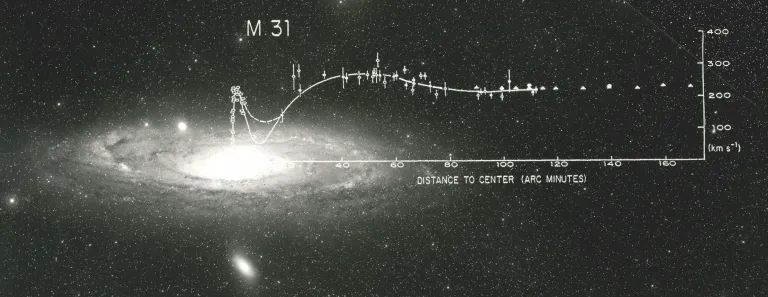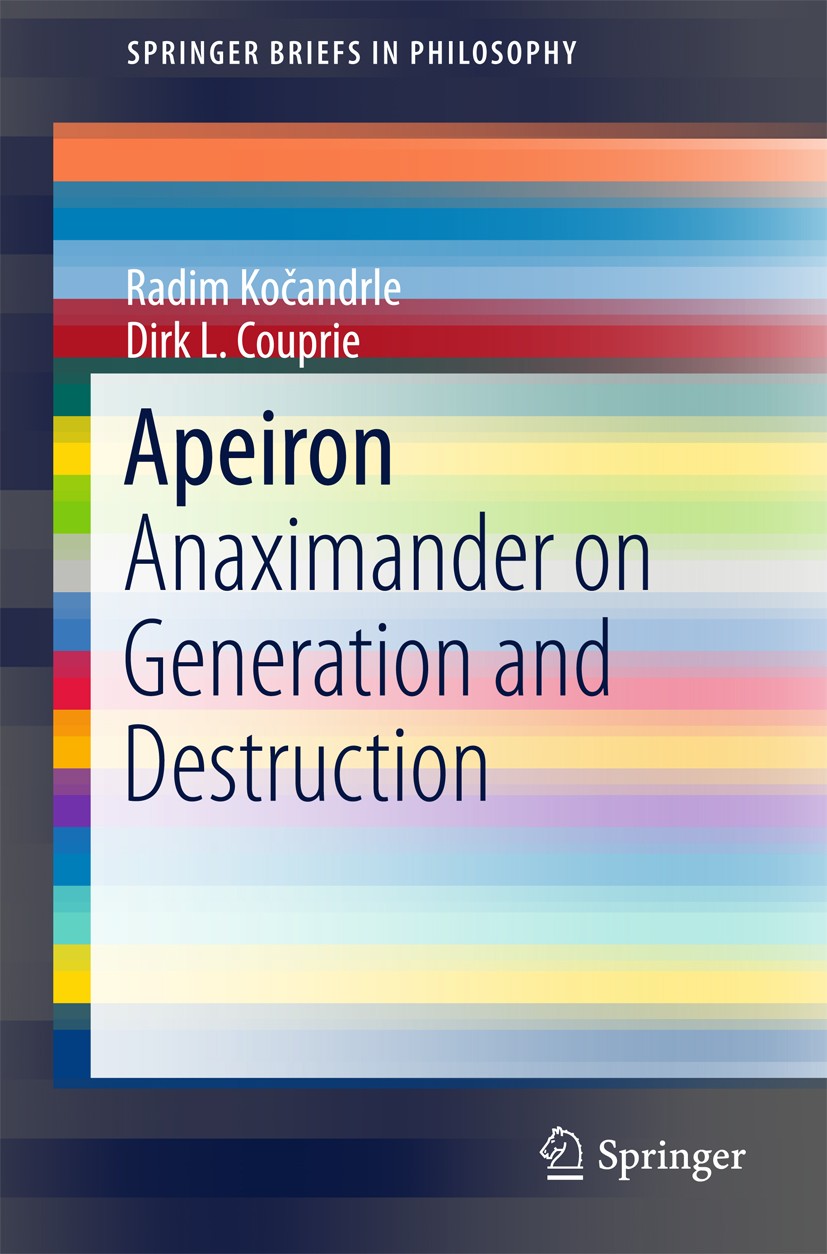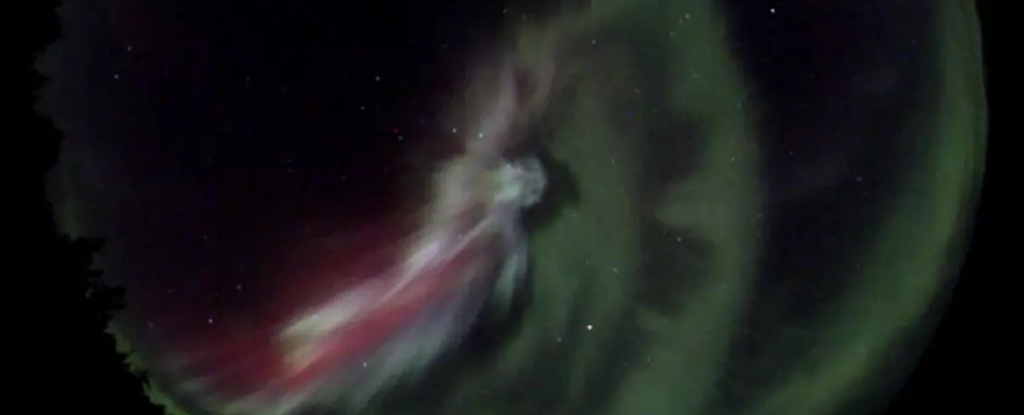Vera Rubin: The Astronomer Who Revealed the Universe's Dark Secrets
Introduction: A Trailblazer in Astronomy
Vera Rubin was a pioneering astronomer whose groundbreaking work transformed our understanding of the cosmos. Born in 1928, she overcame societal barriers to become one of the most influential scientists of the 20th century. Her meticulous observations of galaxy rotation rates provided the first compelling evidence for the existence of dark matter, a mysterious substance that makes up about 85% of the universe's mass. This discovery revolutionized astrophysics and cosmology, challenging long-held assumptions about the nature of the universe.
Early Life and Education
A Childhood Fascination with the Stars
Vera Florence Cooper was born on July 23, 1928, in Philadelphia, Pennsylvania. From an early age, she demonstrated an intense curiosity about the night sky. At just ten years old, she would spend hours observing meteors from her bedroom window, carefully recording their paths in a notebook she kept under her pillow. This childhood passion would eventually blossom into a lifelong dedication to astronomical research.
Academic Challenges and Triumphs
Rubin faced significant obstacles as a woman pursuing science in the mid-20th century. When she expressed interest in astronomy at Vassar College, her high school physics teacher discouraged her, saying, "You should do well as long as you stay away from science." Undeterred, Rubin earned her bachelor's degree in astronomy from Vassar in 1948. She went on to pursue graduate studies at Cornell University and later at Georgetown University, where she completed her Ph.D. in 1954 under the supervision of George Gamow, a renowned physicist.
Early Career and Research Breakthroughs
The Controversy of Galaxy Rotation
Rubin's early work focused on the distribution of galaxies in the universe. In the 1960s, she began collaborating with instrument-maker Kent Ford at the Carnegie Institution of Washington, where she would spend most of her career. Using Ford's advanced spectrographs, Rubin made precise measurements of the rotation curves of galaxies. Her observations revealed something astonishing: stars at the edges of galaxies were moving just as fast as those near the center, contrary to what Newtonian physics predicted based on the visible mass of the galaxies.
Challenging Conventional Wisdom
This finding directly contradicted the prevailing understanding of galactic dynamics. According to established gravitational theory, stars on the outer edges of spiral galaxies should orbit more slowly than those near the center, much like planets in our solar system. Rubin's data showed this wasn't happening, suggesting that some invisible mass—what we now call dark matter—was providing additional gravitational pull. Her results, published in the 1970s and 1980s, initially met with skepticism but eventually became widely accepted as more evidence accumulated.
The Discovery of Dark Matter
Building the Case for Unseen Mass
Rubin and Ford systematically studied dozens of galaxies, carefully measuring their rotation curves. Their work built upon earlier suggestions of missing mass by astronomers like Fritz Zwicky and Jan Oort, but Rubin's comprehensive data provided the most convincing evidence yet. She found that visible matter accounted for only about 10-15% of the total gravitational force needed to explain galaxy rotation, implying that the majority of matter in the universe was invisible and unlike any known substance.
Implications for Cosmology
The discovery of dark matter had profound implications for our understanding of the universe's composition and evolution. It explained longstanding anomalies in galaxy formation and clustering while raising new questions about the fundamental nature of matter. Rubin's work became a cornerstone of modern astrophysics, influencing generations of researchers and transforming cosmology from a theoretical field into a data-driven science.
Overcoming Gender Barriers in Science
A Champion for Women in Astronomy
Throughout her career, Rubin faced discrimination as a woman in a male-dominated field. Early in her career, she was barred from observing at major telescopes, and she frequently encountered skepticism about her abilities. Undeterred, she became a passionate advocate for women in science, mentoring young female astronomers and pushing for greater representation in professional organizations. Her perseverance paved the way for future generations of women scientists.
Recognizing Her Contributions
Despite the significance of her discoveries, Rubin was never awarded the Nobel Prize, an omission many considered a glaring oversight. She did, however, receive numerous other honors, including the National Medal of Science in 1993 and the Gold Medal of the Royal Astronomical Society in 1996. Perhaps more importantly, her work fundamentally changed how we see the universe, proving that most of it consists of material we can't directly observe.
Later Career and Scientific Legacy
Expanding the Frontiers of Astronomy
In the latter part of her career, Rubin continued to push the boundaries of astronomical research. She turned her attention to the study of galaxy clusters and the large-scale structure of the universe. Her work helped refine our understanding of how galaxies form and evolve over time. Rubin's research also contributed to the development of the "cosmic web" theory, which describes the filamentary structure of matter distribution in the universe.
Pioneering Work on Galaxy Rotation Curves
Rubin's most significant contribution to astronomy was her detailed study of galaxy rotation curves. She demonstrated that the rotational velocities of stars in spiral galaxies remain constant with increasing distance from the galactic center, contrary to what Newtonian mechanics predicted. This phenomenon, now known as the "flat rotation curve problem," provided some of the strongest evidence for the existence of dark matter. Her meticulous observations forced astronomers to reconsider fundamental assumptions about the composition of the universe.
Impact on Modern Astrophysics
Dark Matter and the Standard Model
Rubin's discoveries had profound implications for the standard model of cosmology. Her work helped establish dark matter as a fundamental component of the universe, influencing everything from galaxy formation to the large-scale structure of the cosmos. Today, dark matter research remains one of the most active areas in astrophysics, with scientists worldwide working to identify the nature of this mysterious substance through particle physics experiments and astronomical observations.
Inspiring Future Generations
Beyond her scientific contributions, Rubin became a role model for women in science. She actively mentored young female astronomers and advocated for gender equality in the field. Her perseverance in the face of discrimination inspired countless women to pursue careers in astronomy and physics. Many of her students went on to make significant contributions to the field, continuing her legacy of rigorous research and scientific integrity.
Personal Life and Character
Balancing Family and Career
Rubin successfully balanced her demanding scientific career with raising four children, all of whom went on to earn PhDs in science or mathematics. She often involved her children in her work, taking them to observatories and encouraging their scientific curiosity. Rubin's ability to maintain a fulfilling family life while achieving professional success made her an inspiration to working mothers in academia.
Humble Approach to Science
Despite her groundbreaking discoveries, Rubin remained remarkably humble about her achievements. She often emphasized that her work simply revealed how much we still don't understand about the universe. This humility, combined with her relentless curiosity, made her a beloved figure in the scientific community. Rubin continued working well into her 80s, maintaining an active research program and regularly publishing papers.
Challenges and Controversies
Initial Resistance to Dark Matter
Rubin's dark matter hypothesis initially faced skepticism from the scientific community. Some astronomers proposed alternative explanations for the galaxy rotation anomalies, such as modifications to Newtonian gravity. However, as more evidence accumulated from independent observations, the scientific consensus gradually shifted in favor of Rubin's interpretation. The debate over dark matter continues today, with new theories emerging to explain the observational data.
Gender Discrimination in Astronomy
Throughout her career, Rubin faced significant gender discrimination. She was often excluded from important meetings and denied access to research facilities that were readily available to her male colleagues. Despite these obstacles, Rubin persisted, eventually earning the respect of her peers through the quality and importance of her work. Her experiences highlighted the systemic barriers women faced in science and helped spur reforms in the field.
Honors and Recognition
Major Scientific Awards
Rubin received numerous prestigious awards for her contributions to astronomy, including the Bruce Medal, the Gruber Prize in Cosmology, and the National Medal of Science. She was elected to the National Academy of Sciences and became the first woman to receive the Royal Astronomical Society's Gold Medal since Caroline Herschel in 1828. These honors recognized her transformative impact on our understanding of the universe.
Posthumous Recognition
After her death in 2016, Rubin's legacy continued to grow. The Vera C. Rubin Observatory in Chile, currently under construction, was named in her honor. This state-of-the-art facility will conduct the Legacy Survey of Space and Time (LSST), mapping the entire visible sky and searching for dark matter. The observatory represents a fitting tribute to Rubin's pioneering work and her enduring influence on astronomy.
Continuing the Search for Dark Matter
Current Research Directions
Today, scientists continue Rubin's quest to understand dark matter through various approaches. Particle physicists search for hypothetical dark matter particles in underground laboratories, while astronomers study its gravitational effects on galaxy clusters and the cosmic microwave background. The Vera C. Rubin Observatory will provide unprecedented data to further investigate dark matter's properties and distribution throughout the universe.
Unsolved Mysteries
Despite decades of research, many questions about dark matter remain unanswered. Scientists still don't know what dark matter is made of, how it interacts with ordinary matter, or why it's distributed the way we observe. These mysteries represent some of the most important challenges in modern physics, and solving them would represent a major step forward in our understanding of the fundamental nature of reality.
Theoretical Contributions and Shifting Paradigms
Redefining Galactic Dynamics
Vera Rubin's work fundamentally altered our understanding of galactic structures. Her precise measurements of Andromeda's rotation curve in the 1970s revealed that its outer stars moved just as fast as those near the center—an observation impossible to explain using only visible matter. This contradicted Keplerian motion expectations and forced astrophysicists to reconsider galactic mechanics. Rubin's data became the empirical foundation for theories requiring additional invisible mass, ultimately reshaping modern cosmology's core principles.
Challenging Newtonian Gravity
Rubin's findings sparked intense debate about alternatives to dark matter, including Modified Newtonian Dynamics (MOND) theories. While she personally believed in the dark matter explanation, her rigorous data collection forced physicists to examine whether our understanding of gravity itself might need revision at cosmic scales. This ongoing scientific dialogue continues to push the boundaries of fundamental physics, with Rubin's work remaining central to both dark matter research and alternative gravitational theories.
The Rubin-Ford Effect
Discovering Cosmic Motion Patterns
In 1976, Rubin and collaborator W. Kent Ford identified a surprising pattern in galaxy motions—what became known as the Rubin-Ford effect. Their observations showed our Local Group of galaxies moving relative to the cosmic microwave background at about 500 km/s. This discovery provided early evidence for large-scale structure in the universe and helped establish the existence of the Great Attractor, a massive concentration of matter pulling galaxies toward it.
Impact on Cosmology
This work on bulk galactic flows contributed significantly to our understanding of cosmic structure formation. It demonstrated that galaxies don't simply follow Hubble's expansion law but exhibit additional motions due to gravitational interactions, revealing the complex web of dark matter distribution that shapes the universe's large-scale structure.
Legacy in Astronomical Techniques
Advancing Observational Methods
Rubin pioneered techniques that became standard in modern astronomy. Her meticulous approach to measuring galaxy spectra, which involved sometimes sitting at telescopes for 8-hour stretches without bathroom breaks, set new standards for observational precision. She developed innovative methods to extract rotation curves from difficult-to-observe edge-on galaxies, expanding astronomers' toolkit for studying galactic dynamics.
Instrument Design Contributions
Working closely with Kent Ford, Rubin helped refine spectrometer technology, pushing for higher resolution instruments that could detect subtle Doppler shifts crucial for galactic rotation studies. Her feedback directly influenced spectrometer designs still used in observatories today, proving that her legacy includes both astronomical discoveries and advancements in observational technology.
The Human Side of a Scientific Icon
Mentorship and Advocacy
Rubin became legendary for nurturing young scientists, particularly women facing the same barriers she had overcome. She maintained an open-door policy at Carnegie Science, offering guidance on research and career challenges. Notably, she intervened when female colleagues faced discrimination, whether securing telescope time for them or confronting biased committee members.
Science Communication
Despite working in a highly specialized field, Rubin excelled at explaining complex concepts to non-scientists. Her public lectures made dark matter comprehensible without oversimplifying, and she frequently emphasized how her work revealed "how much we don't know." This humble approach made her one of astronomy's most effective public educators.
Unfinished Work and Lasting Questions
Rubin's Unanswered Queries
Until her death at age 88, Rubin remained actively engaged in research, particularly puzzling over anomalies in dwarf galaxy rotation curves that didn't fit standard dark matter models. These observations hinted at potential complexities in dark matter behavior or interactions that theorists are still working to explain today.
The Future of Dark Matter Research
Current experiments trying to detect dark matter particles directly (like XENON and LUX) or study its properties indirectly (through projects like the Rubin Observatory's LSST) all build upon Rubin's foundational work. Her data remains crucial for testing new theoretical models about dark matter's nature and distribution.
Posthumous Honors and Memorials
Scientific Institutions and Awards
Beyond the Vera C. Rubin Observatory, numerous awards and programs now bear her name, including the AAS's Vera Rubin Early Career Award and scholarships for women in astronomy. Several asteroids and lunar features have been named in her honor, a fitting tribute for an astronomer who changed our cosmic perspective.
Cultural Impact
Rubin's story has inspired plays, documentaries, and children's books about women in science. NASA named its next-generation space telescope's focal plane after her, ensuring her name remains associated with cutting-edge cosmic exploration. Perhaps most significantly, her life demonstrated how perseverance against prejudice could revolutionize science.
Conclusion: A Universe Transformed
Lasting Scientific Influence
Rubin's discoveries fundamentally altered humanity's understanding of the cosmos, proving that most of the universe's matter lies beyond our senses. Her work stands alongside other great paradigm shifts like Hubble's expanding universe discovery, forcing science to confront profound mysteries about reality's fundamental nature.
Enduring Inspiration
As both pioneering scientist and trailblazer for women in STEM, Rubin's dual legacy continues inspiring new generations. Her example proves that rigorous observation can reveal hidden cosmic truths and that perseverance can overcome systemic barriers. The Vera C. Rubin Observatory's upcoming survey may provide answers to questions she first posed—ensuring her scientific spirit continues guiding astronomy's future.


















Comments